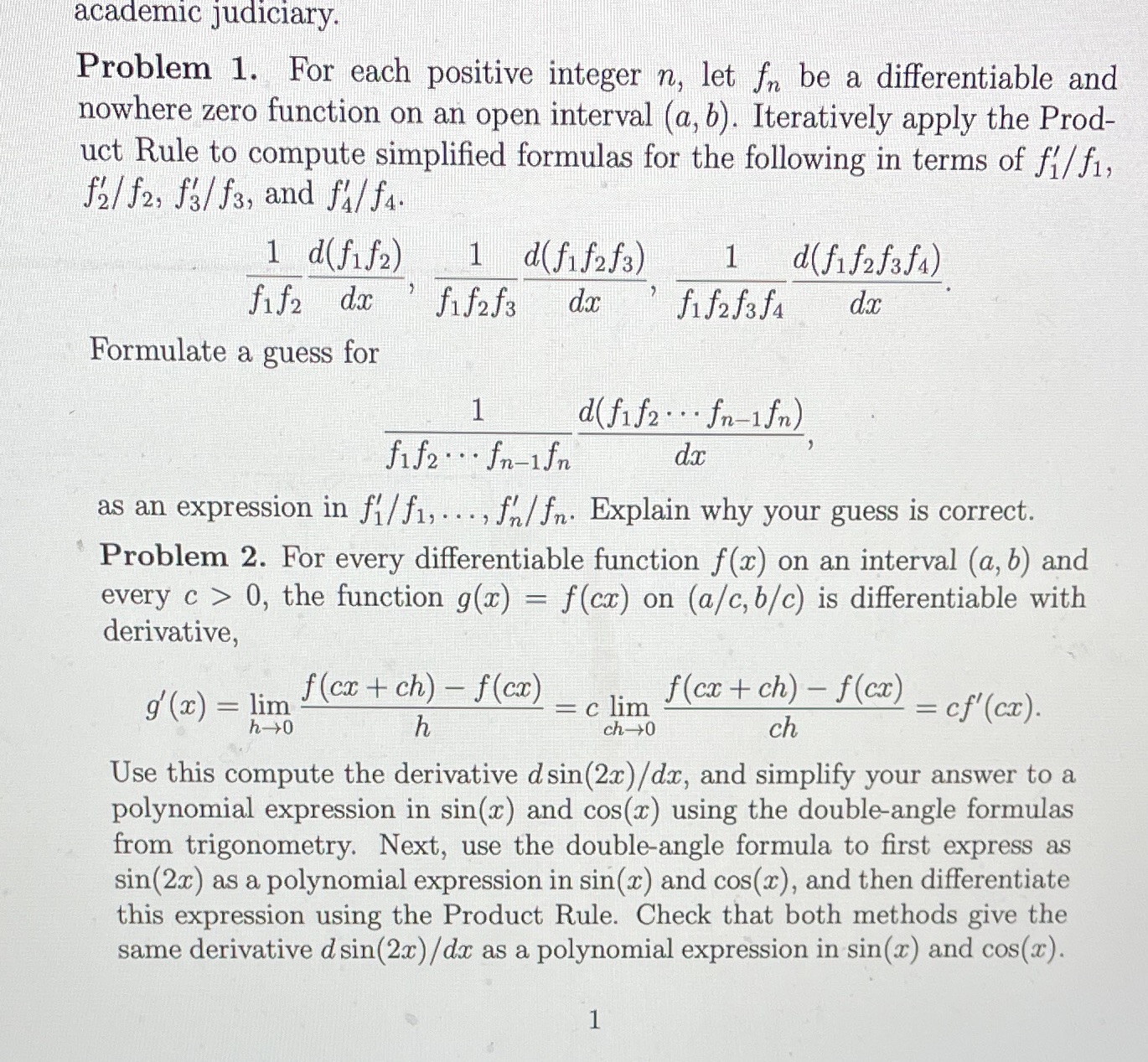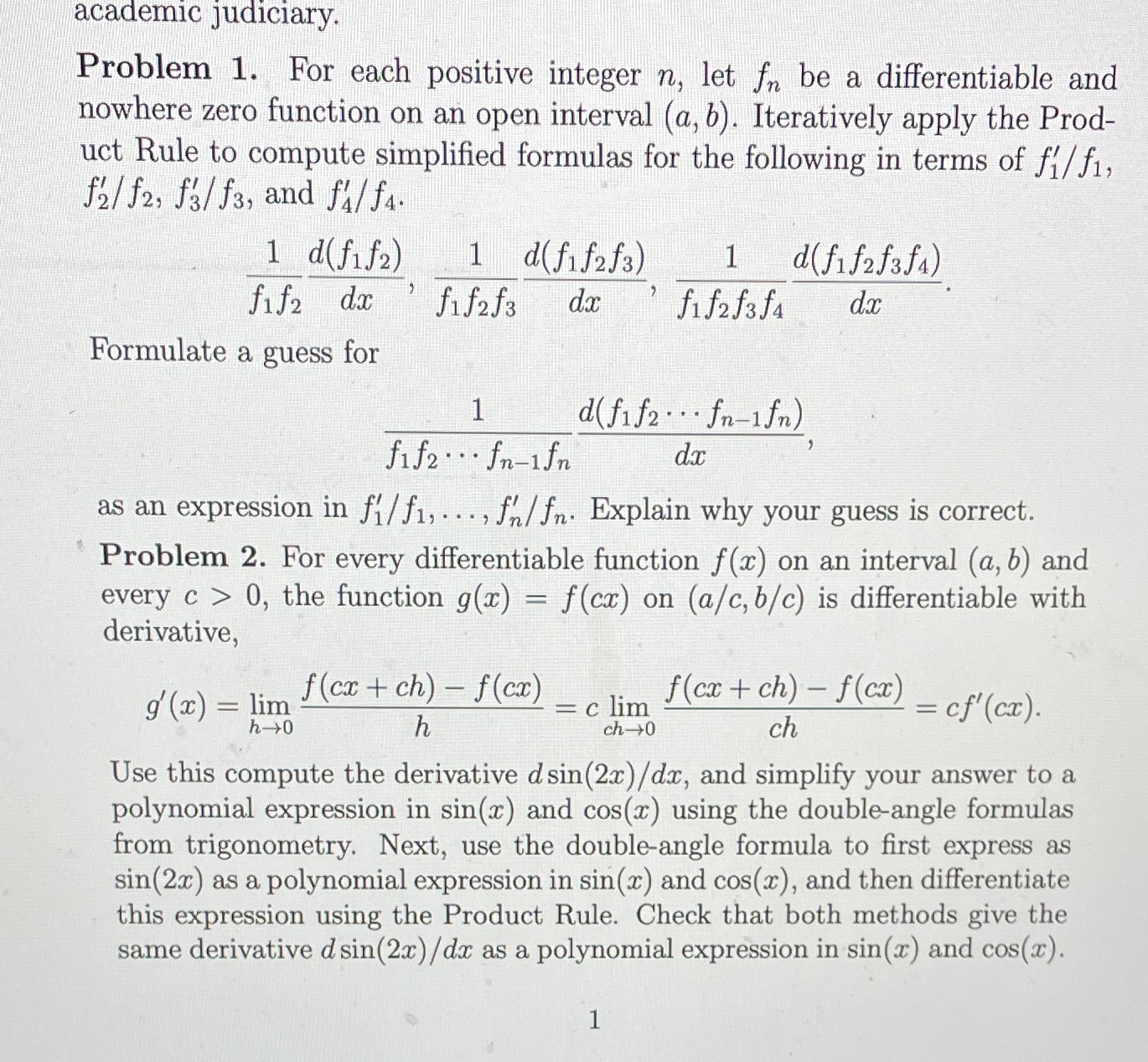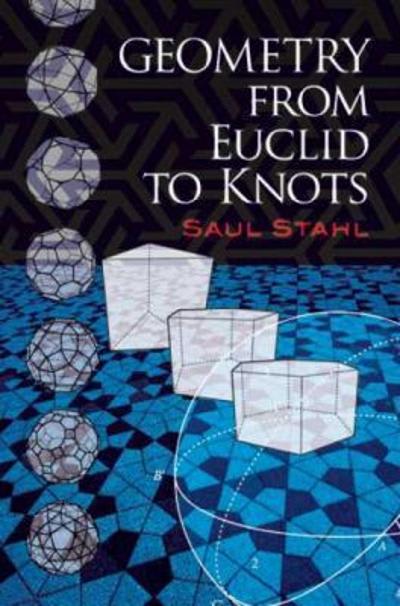Answered step by step
Verified Expert Solution
Question
1 Approved Answer
#1,#2 academic judiciary. Problem 1. For each positive integer n, let In be a differentiable and nowhere zero function on an open interval (a, b).

#1,#2

Step by Step Solution
There are 3 Steps involved in it
Step: 1

Get Instant Access to Expert-Tailored Solutions
See step-by-step solutions with expert insights and AI powered tools for academic success
Step: 2

Step: 3

Ace Your Homework with AI
Get the answers you need in no time with our AI-driven, step-by-step assistance
Get Started


